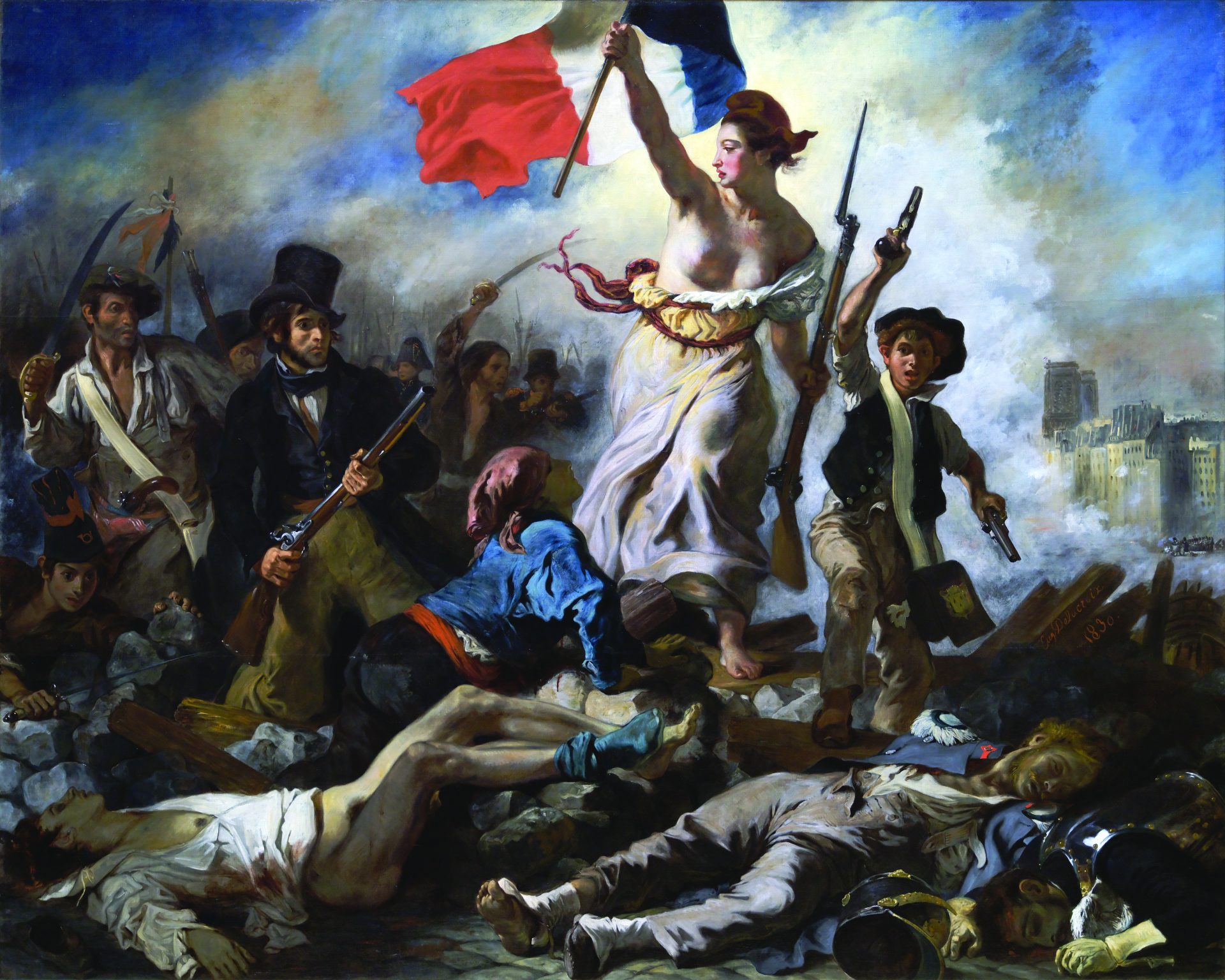
Lawn-mower haircuts and J. C. Penney polos are to Glenn O’Brien what Haiti is to Sean Penn. They provoke in him a kind of heroic passion that makes him want to save untold thousands from fashion disaster, or at least from the creeping sadness of the Gap.
O’Brien has been a downtown Zelig for more years than he’s willing to reveal: one of Warhol’s Factory workers, an editor and art director of Interview magazine, host of the pre-MTV public-access new-wave show TV Party, creative director at Barney’s. Now he’s GQ’s Style Guy columnist and a freelance something-or-other to the fabulous. Husband, father, devout golfer. It’s a picaresque biography, and you have to envy the guy. Name your favorite punker emeritus. O’Brien is friends with him. The only misstep he could make now would be to overplay his hand.
Enter How to Be a Man: A Guide to Style and Behavior for the Modern Gentleman (Rizzoli, $25; illustrated by Jean-Philippe Delhomme). It’s bound in a jacketless clothette cover that puts it in the same class of highly giftable how-tos as that red thing bought by so many and read by so few, The Dangerous Book for Boys. The headings to most of its fifty brief chapters borrow the users’-manual conceit: “How to Not Look Stupid,” “How to Have a Vice,” “How to Be an Individual.”
Don’t let the nuts-and-bolts framing device fool you. This three-hundred-page tome (much of it repurposed from his columns) is only a “guide” in the way that a drunk uncle’s monologue is “advice.” A few nuggets are in there, but you have to be patient, and maybe start drinking yourself, to get them.
A men’s-style writer first must make the case that it’s OK to care about how you look. Many hetero men take a certain pride in appearing hideous, but O’Brien wants us to know we’re only hurting ourselves. Here he is at his best, on wearing the right suit: “Some in the pack seem to wear suits that adhere more reasonably to their bodies, and we make a mental note that these are the young alphas, the future chiefs of that corporate tribe, because men without vanity, with no ability to perceive themselves in the mirror, are fated to be drones.” It’s a sparely written truth, unbearable to concede but impossible to deny. It could almost have come from our sex’s greatest living philosopher, Jack Donaghy, Alec Baldwin’s fictional executive on 30 Rock.
As promised, O’Brien supplies sartorial advice for avoiding dronehood. Here, unabridged, are the net additions to my fashion sense provided by HTBAM:
· Jacket lapels of just over three inches will look good forever.
· Having a tailor open the cuffs on an off-the-rack suit can make it look bespoke.
· Socks don’t have to match your shoes or your pants.
And that’s it. The rest I either knew already or had to reject as being unlikely to matter in the basement at Syms. (Sorry, Glenn. Even if I won the Powerball I would not pay four hundred dollars for a necktie.) O’Brien has, simultaneously, too much and too little to say. Being an expert on affectation, he inflates his cause into a rambling manifesto of apocalyptic dandyism:
What is the answer to the neoconservatives, the Islamic fundamentalists, twelve-step earnestness, and Scientology? Maybe it’s mass cultural extravagance. Bring on the sissies, the fops, and high fashion. Fashion is the one thing I can imagine taking young men’s minds off institutional religion, which to me is nothing but failed fagginess. We need a brave new fagginess that will blow the Pope’s red shoes right out of the water and make the Taliban’s heavy-handed mascara run from weeping. Straight men need to find their flamboyance. We need gay men to be gayer too. We need straight men to take up the kilt and swish with abandon. Bend it like Beckham! We need a new superficiality that can challenge the insane illusions that pass for reality in the media.
Um . . . OK. I was really just wondering whether I could wear my blazer over a T-shirt, but if putting on a tartan skirt and painting my toenails would defeat Islamic terror, Tom Cruise, and Rick Santorum, who am I to say no?

I nearly suggested, snidely, that A Brave New Fagginess would have been a better title for this book. But now I’m saying it with no snideness at all. It would certainly prepare us better for the latter half of HTBAM, which departs the fashion district for higher climes in three ambitious sections: “Behavior,” “Culture and Society,” and “Wisdom.” A sampling:
If you can afford it, hire a person with a BBC accent to answer your telephone. If you must pick up your own phone, answer it “Hello, studio.” In New York City, many landlines are answered “Hello, studio,” or simply “Studio.” This is a glamorous way to answer, suggesting that you have reached an art studio or a photo studio—possibly even a movie studio or massage parlor.
Brave new fagginess, indeed! I’m all for correcting Hemingway’s silly male imperatives of combat and stoicism, and in fairness, O’Brien’s masculine ideal often strikes a good balance between strength and refinement. But the times he blows it are so grating it’s hard to take the rest seriously. His chapter “How to Fight like a Man” boils down to a few options for the gentleman in melee: Coldcock your opponent, kick him in the nuts, or run away. What—would taking yourself hostage and backing out of the room, like Cleavon Little in Blazing Saddles, be too undignified?
When we seek medical care, O’Brien wants us to page our inner Janet Leigh: “Decorum will get you many places, but it will get you nowhere in a hospital or a doctor’s office. If you are not being treated right or even treated at all, why not scream? Not just a little venting of steam but a real blood-curdling, ululating scream from the depths of Hell.” Count me among the men who would rather die quietly in an emergency-room vinyl chair.
“Now, hold on,” a charitable soul might protest. “O’Brien is a satirist—he has the golden-satyr cuff links to prove it! Can’t you recognize irony when you see it?” Alas, I can. The waiting-room advice comes at the end of a three-page diatribe on the evils of our health-care system so earnest in tone that it lapses into perhaps our most boring contemporary cliche: the HMO horror story.
Nor do I believe O’Brien to be pulling our legs in “How to Age,” when he suggests that “our rulers” effect a campaign of indirect murder against promising young people.
Give them heroin and guns and guitars, and for God’s sake, keep them downtown! As long as natural leaders are neutralized, as long as the young can be alientated from the old, and as long as women and men can be set at one another’s throats, it is unlikely that anyone will pay much attention to the more essential issues of ethics and social justice.
Yeah, so anyway, this blazer with this T-shirt? Thumbs down?
I wish he were joking when he informs us, in the same chapter, “It is in the interest of big business for there to be fewer workers and for them to have shorter lives.” Yes, that’s why every week America loses another couple factories to India and China: They have such attractively tiny workforces. By the time I got to “How to Be Famous (or Not)”—which suggests that “if you are going to be riding in a car, always wear underwear”—he had completely lost me. There are only two possible things he could be referring to: the exposed cooters of Britney Spears and Paris Hilton. Yes, he’s having fun. But what man jokes to a male audience about not flashing your vagina?
It’s a shame, because when he’s standing on firm ground, O’Brien is capable of something indistinguishable from wit: “The worst offense is wearing suspenders and a belt simultaneously. That’s what you call profound pessimism.” And, “I would never wear chalk stripes to a funeral unless I was celebrating.” And, “White athletic socks should only be worn with actual athletic shoes during athletics or work boots while doing physical labor, and tube socks should only be worn when masturbating in someone else’s bed, or better yet, never.” I could read that guy all day! OK, maybe not all day, but for a while. Actually, come to think of it, a lot of these pieces could be stripped down and pressed into good service as glossy magazine copy. Hey, there’s an idea!
Jason Ross is a writer for The Daily Show with Jon Stewart. He is also a cowriter of the best-selling America: The Book (2004) and Earth: The Book (2010; both Grand Central).






